Space Image of the Day Gallery (February 2017)
Image of the Day Archives
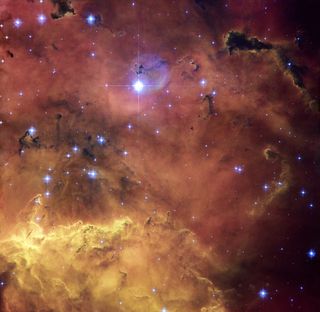
For older Image of the Day pictures, please visit the Image of the Day archives. Pictured: NGC 2467.
Remembering STS-107: Liftoff

Wednesday, February 1, 2017: Today marks the 14th anniversary of the Columbia disaster, in which seven NASA astronauts on mission STS-107 were killed as their space shuttle broke apart upon its return to Earth. In this photo, the space shuttle Columbia blasts off from Pad 39A at the Kennedy Space Center in Florida on Jan. 16, 2003. — Hanneke Weitering
Jupiter’s Swirls and Pearls
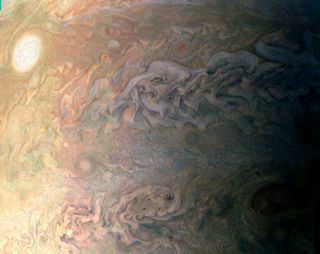
Thursday, February 2, 2017: Jupiter’s swirling clouds look like a work of art in this processed image taken by NASA’s Juno spacecraft. Citizen scientist Eric Jorgensen enhanced colors in the raw image to bring out the detail in Jupiter’s intricate cloud structure. In the top left corner is one of eight white, oval-shaped storms known collectively as the "string of pearls." — Hanneke Weitering
Hawaiian Sun Glint Spotted from Space
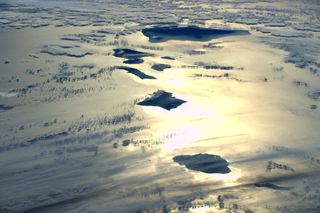
Friday, February 3, 2017: International Space Station commander Shane Kimbrough of NASA shared this photo of the Hawaiian islands seen from space on Jan. 29. In the photo, the Pacific Ocean glows with sun glint, a phenomenon caused by sunlight reflecting off the ocean’s surface at the same angle from which an orbiting satellite (or space station astronaut) is viewing Earth. — Hanneke Weitering
Al Shepard Plays Golf on the Moon
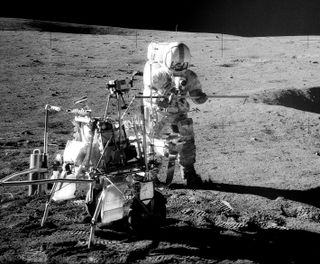
Monday, February 6, 2017: On this day in 1971, Apollo 14 astronaut Alan Shepard became the first person to play golf on the moon. He smuggled a makeshift golf club head onto the spacecraft inside a sock. The first ball he hit veered into a nearby crater, but with a solid second swing, the next ball soared for "miles and miles and miles" in the moon’s microgravity. Here, Shepard stands by the Modular Equipment Transporter, a cart for lugging gear around on the lunar surface. — Hanneke Weitering
Astronaut’s First Aurora
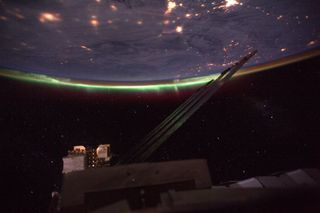
Tuesday, February 7, 2017: Astronaut Thomas Pesquet of the European Space Agency saw the northern lights from the International Space Station for the first time on Jan. 18 and snapped this photo of the light show with space station’s solar panels in the foreground. Auroras occur when radiation from the sun hits our atmosphere. "It is literally a visual representation of the Earth's magnetic field protecting all living beings from space radiation," Pesquet wrote on Flickr. — Hanneke Weitering
Close-Up from Cassini
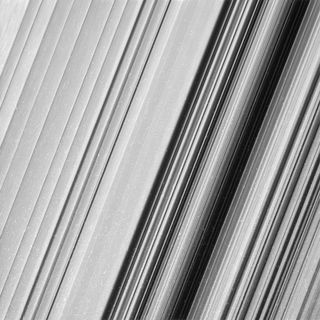
Wednesday, February 8, 2017: NASA’s Cassini orbiter captured the most incredible close-up shots of Saturn’s rings during a ring-grazing orbit in December. This view shows Saturn's outer B ring in visible light with unprecedented detail. — Hanneke Weitering
Get the Space.com Newsletter
Breaking space news, the latest updates on rocket launches, skywatching events and more!
Astronauts in Quarantine

Thursday, February 9, 2017: Apollo 14 astronauts Stuart Roosa, Alan Shepard and Edgar Mitchell returned from the moon on this day in 1971. For nearly three weeks, the astronauts were kept in quarantine, because NASA wanted to ensure that they didn’t bring home any contagions from the moon. Apollo 14 astronauts were the last to be placed in quarantine after NASA later deemed it unnecessary. Here, the astronauts greet the media while sealed inside the Mobile Quarantine Facility aboard the U.S.S. New Orleans recovery ship on the day of their return to Earth. — Hanneke Weitering
Comet Encounter
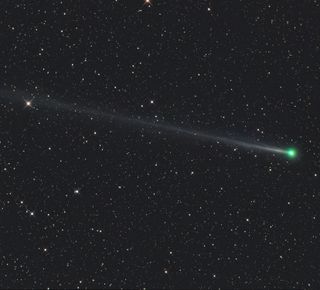
Friday, February 10, 2017: A bright green comet will make its sweep by Earth on Saturday in the closest comet encounter in over 30 years. Comet 45P/Honda-Mrkos-Pajdušáková can be seen with a pair of binoculars or a small telescope. Astrophotographer Jim Denny captured this photo of the comet's approach on Dec. 23. — Hanneke Weitering
A Rose in Space

Monday, February 13, 2017: This stunning cosmic flower captured by astrophotographer Miguel Claro is known as the Rosette Nebula. Spanning 50 light-years , it is the largest "rose" in the galaxy (albeit made primarily of dust, gas and baby stars). Approximately 2,500 newborn stars reside within this flowery nebula, and more continue to form from its clouds of cosmic dust. — Hanneke Weitering
The Heart Nebula
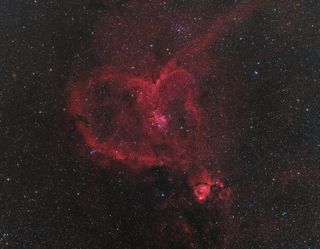
Tuesday, February 14, 2017: Happy Valentine's Day from space! This heart-shaped cloud of cosmic gas and dust, photographed by veteran night sky photographer Ron Brecher, is called the "Heart Nebula," or IC 1805. It lies about 7,500 light-years from Earth in the constellation Cassiopeia. — Hanneke Weitering
Join our Space Forums to keep talking space on the latest missions, night sky and more! And if you have a news tip, correction or comment, let us know at: community@space.com.

Space.com is the premier source of space exploration, innovation and astronomy news, chronicling (and celebrating) humanity's ongoing expansion across the final frontier. Originally founded in 1999, Space.com is, and always has been, the passion of writers and editors who are space fans and also trained journalists. Our current news team consists of Editor-in-Chief Tariq Malik; Editor Hanneke Weitering, Senior Space Writer Mike Wall; Senior Writer Meghan Bartels; Senior Writer Chelsea Gohd, Senior Writer Tereza Pultarova and Staff Writer Alexander Cox, focusing on e-commerce. Senior Producer Steve Spaleta oversees our space videos, with Diana Whitcroft as our Social Media Editor.
